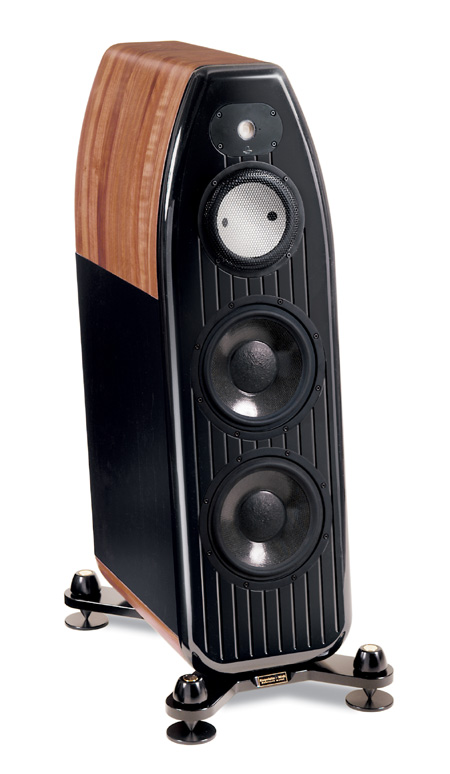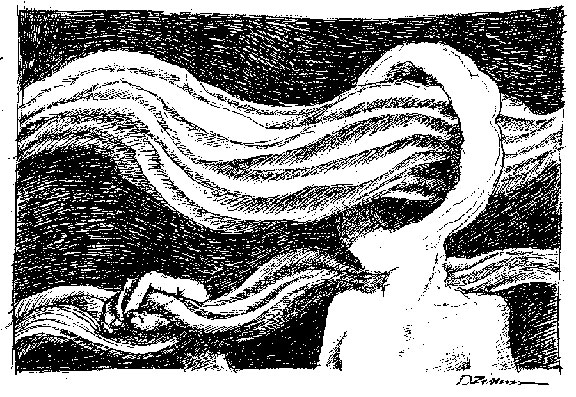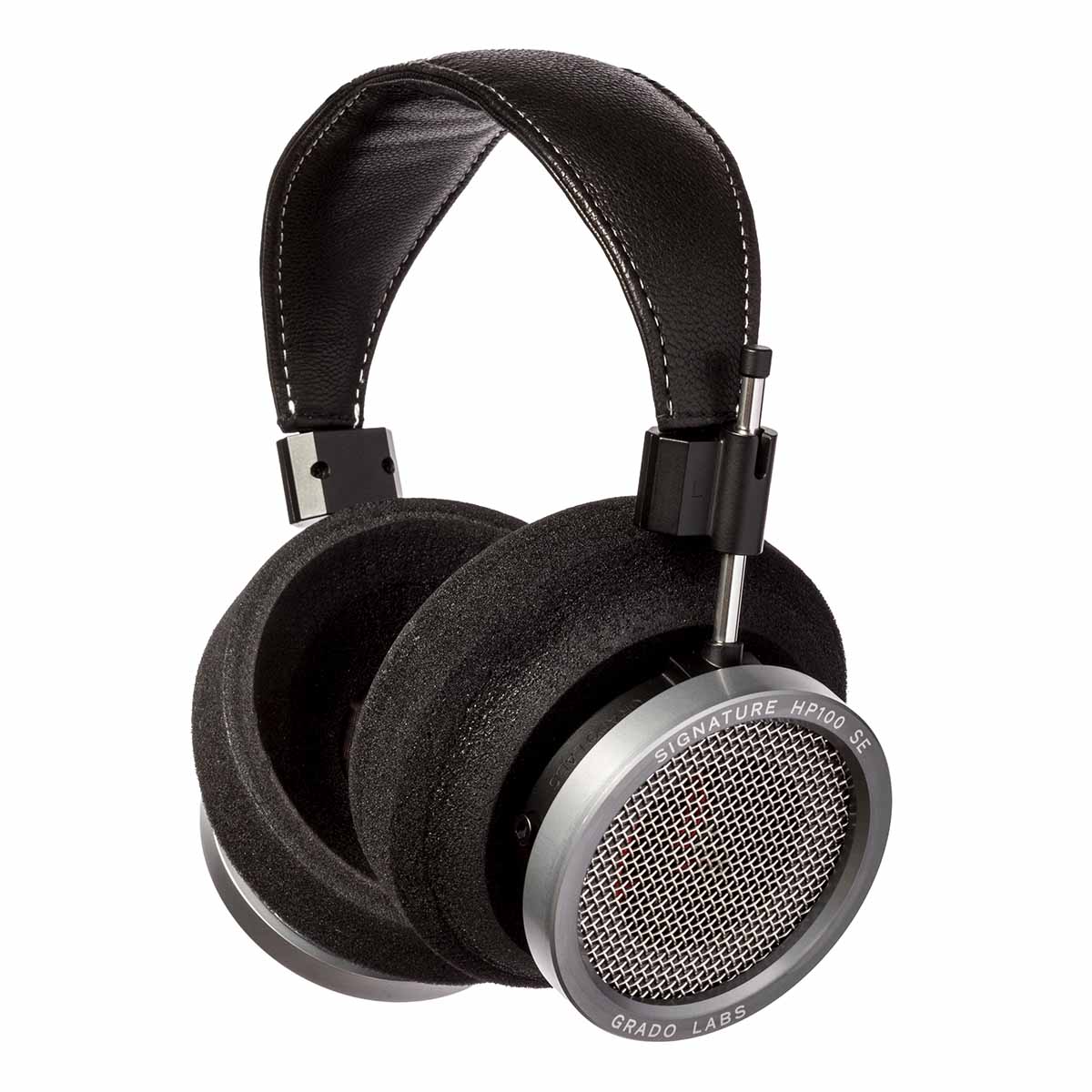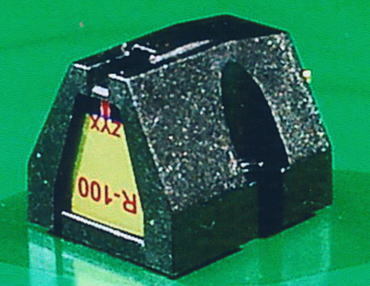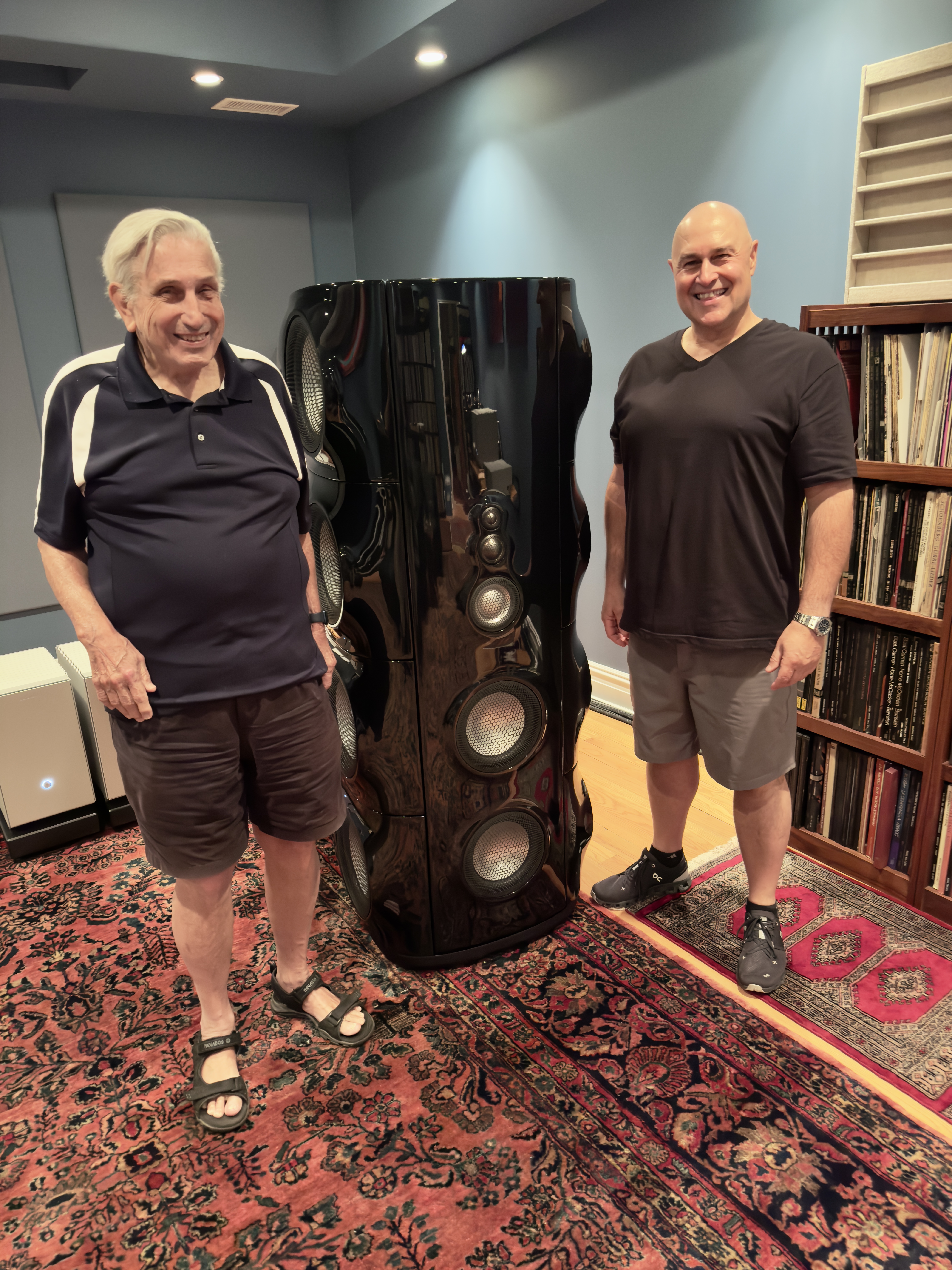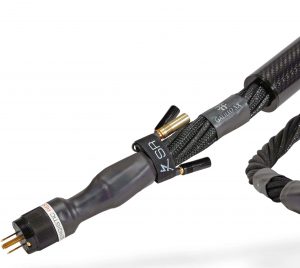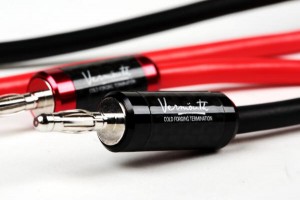This article by Bob Neill originally ran in Issue 3, October/November 2002, so while we call this section "New Old Stock - Articles from Our Days in Print" you are also going to see some articles from our early days of going online.
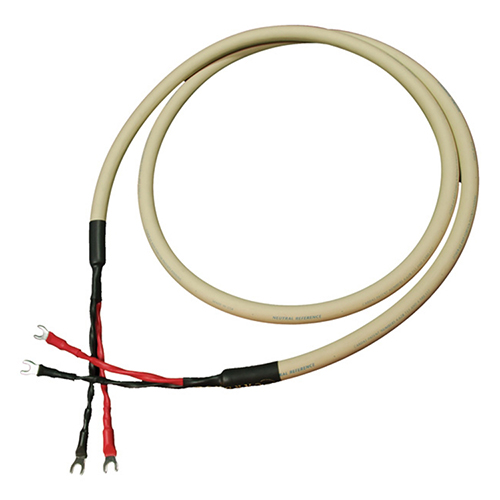
How George Cardas's Neutral Reference speaker cable strikes you and whether or not you feel it belongs in the "Opaque" Cable Collection will depend, as it so often does in audio, on how you meet it. If you come to it from within the Cardas family of cables, moving step by step from the much loved and admired Golden Cross to Golden Reference and then on to Neutral Reference, it will likely strike you as essentially, well, neutral. You will be hearing it as its designer intended. You will have come through the gradual and continuous refining process that begins with the rich golden magic of the Cross and arrived at the point where all you hear is what the rest of your system is telling you. (Golden Reference was created after Neutral Reference but that's a small point.) Golden Cross is designed for what Mr. Cardas has predicted are "most listeners," with their less than reference quality electronics and imperfectly constructed and arranged listening rooms. On his website, he tells us, "It has a warm, involving character and is very 'musical.' For most musical enjoyment situations, it would be the preferred cable." He sees his two "Reference" cables as designed for just that: systems and rooms of reference quality, situations in which, for whatever reason, we do not want our cables to add or subtract anything. He tells us that both the Golden and Neutral Reference cords have "no euphonic character of their own… they are extremely resolute and forgive no sins in the room or system. I use Golden Reference in my reference system because it is technically the most accurate. If the purpose of your system is as a reference tool and your listening room is a "reference room," this is your choice."
Like most of us, however, I did not come to Cardas Neutral Reference from within the Cardas family. I came to it from other cables and from live music. Neutral Reference was my first taste of Cardas, and as a result, predictably, I heard something somewhat different from what Mr. Cardas describes. I heard the Cardas interpretation of neutrality, which to my ears—conditioned by Nordost Valhalla and recently re-conditioned by Audience Au24—sounded like the purest essence of the maple tree. Smooth, full, clear, and delicious. Grade A, Light Amber, First Run. (Sorry, the imagery of maple syrup comes naturally to us up here in the Northeast this time of year.) Not heavy, not viscous, not dark, not over-rich. Very much like fresh flowing natural spring water but with more than a trace of amber that rides on the tongue. My first experience of Neutral Reference, on eighteenth century music, coming to it from notably leaner cords, was an almost entirely sensuous experience. I got a slightly different impression of it with nineteenth century music, but more on that later.
The Eighteenth Century
The first CD I put on was one of Roy Goodman's Haydn Symphonies, Hanover Band, on Hyperion. They are currently being reissued at mid-price and I recommend them highly. I am accustomed to hearing the 'early instrumented' Hanover sound light, spry, and airy, its 'authentic' strings just slightly pungent, with an accompanying harpsichord lightly ticking away just below the surface. On Cardas Neutral Reference, the Hanover sounded almost like a modern orchestra. Full, smooth, and robust with the harpsichord thumping clearly and reverberant in its midst. Textures and individual sonorities were present but mainly submerged in the overall blended sound of the orchestra. Not at all muddy, just not detailed. We do not hear a lot or relief—surface is smooth. Once you adjust to this presentation, coming from the lighter, leaner Valhalla and Au24 in particular, it feels very convincing and authoritative. And though I tend to prefer less fulsome presentations, I expect the overall weight and balance of Neutral Reference will strike some listeners, especially those who are not exactly fans of 'early instruments,' as about right. This music coming to us through the Cardas cable is not immediate or tactile. It feels rather like a large occupational force aiming to envelop us and fill our rooms with beauty. It is cable that brings out the Beethoven in Haydn.
To stay on this track, I immediately shifted to a recording I know well for its even greater overall lightness and clarity of texture, Haydn's String Quartet Opus 74, Prazak Quartet, on Praga. The sound was more robust than on Au24, richer than on Valhalla, and, curiously, more open on top than on Monument. Neutral Reference doesn't roll off the top, but builds weight and fullness under it so that the overall balance feels more neutral than many cables with open high ends. Cardas' explanation for this: "The reason most cables that are smooth are rolled off is because the only way to eliminate the ring once it is there is to mute or filter the high end. We eliminated the ring in the conductor within the stranding of the conductor itself—we do not need to mute or roll off the cable." If you are a Cardas fan, I expect you would find Valhalla too bright and severe on this recording, Au24 a bit too light, and Monument too detailed. The Au24's lighter presentation enables it bring out grace, elegance, and the details of timbre and texture more easily; but it also cedes a degree of forcefulness. The Audience cord is more interesting to listen to music through, but the Cardas, for some listeners, may be more satisfying. The last time I felt a difference like this one, I was comparing an Accuphase D85 CD player with a Naim CDS2. Neutral Reference has a sweeping, blending, almost billowing Accuphase-like sound. It is definitely a nineteenth century cable. It will love Beethoven's 1st, 3rd, 5th, 7th, and 9th symphonies and all of Brahms, Bruckner, Mahler, and Richard Strauss. And it won't look at their interesting undersides, as Monument would! We'll go there in a minute.
On to one more familiar reference CD, Sigiswald Kuijken's Bach Violin Sonatas and Partitas, on Deutsche Harmonia Mundi. Kuijken's baroque violin has more body and is fuller on Neutral Reference but is also less tactile than on Au24. It is sweeter and fuller than on Valhalla, smoother and less earthy than on Monument. It strikes a middle-ground, offering a taste of the baroque instrument's bitter-sweetness along with enough leavening fullness and body to keep everything from sounding too particular or demanding on ears accustomed to a modern violin's less arresting and less distinctive sound. Neutral Reference makes this recording more acceptable to a wider audience. Its departure from absolute "transparency"—its tone-controlling—while considerably less subtle than Au24, is extremely effective in this regard. It generalizes Kuijken's violin.
The Nineteenth Century
Okay, let's get on to where this cable wants to go. Berlioz, Symphony Fantastique, Colin Davis, London Symphony Orchestra, on LSO Live. Ah, this is Cardas Country. The whole presentation is weightier than on either Au24 or Valhalla. The orchestra seems larger, which Berlioz would heartily approve of. We are again less aware of instruments, more aware of an orchestra. This music is moodier and more atmospheric than I am accustomed to hearing it. There is definitely a sense of an orchestra playing in a medium—the air is thicker than with the other cables. When cellos are struck with bows, there is more impact, less specific cello sound. If the Audience cable reminds us Berlioz was an early romantic and contemporary of Schubert, the Cardas gives more the feel of the second generation of romanticism—Brahms and Bruckner. The music has more drama and sweep with Neutral Reference, it is easier to get caught up in. Smooth and powerful.
On to Bruckner's Symphony No. 4, Gunter Wand, Berlin Philharmonic, on RCA. Massive, weighty, sensational. Rich ribbons of string sound, blaring brass seemingly moving large amounts of air. This cable has Bruckner written all over it. It makes my whole system sound larger in scale and romantic. At this point, I did a quick switch to Golden Reference out of curiosity. I spent very little time with this cord and had it here mainly to get a taste of the Cardas family sound. Through the Golden Reference, the Bruckner becomes a little richer and darker. Not where this listener wants to go, so back to Neutral Reference. Interesting note: my twenty minutes or so with the Gold makes the Neutral sound more open now. How about Audience on the Bruckner? Strings are clearer, more distinct, creating more tension. Woodwinds are airier, lighter, creating more contrast. Brass are a bit clearer, slightly leaner, making them more piercing. The whole presentation is more detailed and complex, not quite as massive as with Neutral Reference. When the orchestra peaks, there is more slash than thunder. We are more aware of the space and of a large group of instruments playing together in it. We are less lifted up and blown away.
Jazz and Rock
Time for the olde jazz test. Jackie McLean's New Soil, on Blue Note. Listening to the full bodied sound of McLean's alto sax and Donand Byrd's trumpet might suggest that this is the kind of recording George Cardas had in mind when he began designing cables. Getting late 1950s and early 1960s jazz recordings from analogue to digital tape is an under-appreciated art. Even when it's done well, as it is here, it's hard to get the feel of the original. And there's nothing worse than thin, dry jazz, which is often what you get from 'transparent' cable, which in going hard for the information somehow seems to miss the soul. But I have heard this album on vinyl, and McLean especially is in fact harder and leaner than I'm hearing here. My friends tell me that Cardas Neutral Reference does a very respectable job of compensating for richness and body lost in the digital transmission of some of their older recordings and I believe them; but the sense I'm getting here is that it's being overdone. If you like jazz rich and warm no matter what, this might be your ticket. Plenty of fullness, no dryness, and plenty of wonderfully warm air. Au24 brings out this recording's energy and excitement better and reminds me better of the vinyl recording I once had. It's a bit more open than either Neutral Reference or Monument—the latter a fine cable for old jazz recordings.
Tom Petty, Full Moon Fever, on MCA. Warm, rich, impactful. Tom himself is less present and I miss him; but as an overall rock 'n' roll show, this goes pretty well. As with the Bruckner, there is more thunder than slash, so depending on what your preferences are in rock—whether you want to hear into the performance or whether you just want it to knock you on your ass….
Roy Buchanan, Sweet Dreams: The Anthology, Polydor. I was a 'sort of' Buchanan fan back in the 1970's and had a couple of his early LP's, but had lost track of him until a recent thread on Audio Asylum's Music Asylum woke me up. This two CD set, superbly re-mastered, is a jewel. On Neutral Reference, Buchanan's electric guitar is warmer, has less color and character and is less incisive than on Au24. The performance as a whole is more atmospheric on the Cardas cord, and Roy's voice is slightly enriched. It is as if the gig is being performed in a warmer acoustic. As with the Petty, the recording is less informative but very compelling in its way.
Time for some conclusions. What does Cardas Neutral Reference cable seem to be doing to the music in the way of tone-controlling, compared with what the other "opaque" cables are doing? I said earlier, in reference to the eighteenth century music, that it seems to generalize a bit. With the nineteenth century, I would say it is more obviously enriching it. What was pale amber on Bach and Haydn seems a richer brew on Berlioz and Bruckner. A lot of nineteenth century music likes that. It is quite possible both composers would prefer their music coming through the Neutral Reference. It goes their way, so to speak, though there will be listeners who feel it is a bit heavy-handed in this regard. Some will find that a lot of recordings gain from both the tasteful coloring and artful enrichment that Neutral Reference provides. Clearly some older digital transfers fall into this category. Also early music on 'authentic' instruments, if you can't take them neat. With rock, it's a matter of taste, as my notes indicate; and I am a little troubled by how Neutral Reference changed the McLean recording.
There are some speakers (Merlins come to mind but perhaps also some planars and stats) that some listeners might prefer with a bit of Cardas's kind of enrichment. My Harbeths do not, and I'm not in love with the idea of taming one component with another as a rule. More often than not, I find the result is conflict rather than concord.
I am still relatively new to the whole "opaque" aesthetic, though thanks in particular to Au24, I have had the seals on my mind broken. A year or so ago, I would have found Cardas Neutral Reference too romantic to take seriously. This time around, I see its point. I prefer the subtler art involved in the design of the Audience cord, but some of you certainly might not. I hope I have made the differences clear enough so you can judge for yourselves.
"Cardas Neutral Reference speaker cable… sounds the same at any length, whether one or thirty feet, between any component, at any originating or terminating impedance. Neutral Reference is perfectly symmetrical and non-directional. It can be terminated either single- or bi-wired."
Neutral Reference loudspeaker cables
Retail: 1 meter pair: $500, 1 meter bi-wire: $630, 2 meter pair: $730, 2 meter bi-wire: $860
Specifications
- Outside Diameter: .600"
- Dielectric Type: Teflon®, Air
- Inductance uh/ft/loop: .034
- Capacitance pf/ft: 117
- Cable awg: 8.5
- Conductor Type: Golden Ratio, Constant Q, Crossfield, Pure Copper, Litz.
Cardas Audio, Ltd.




